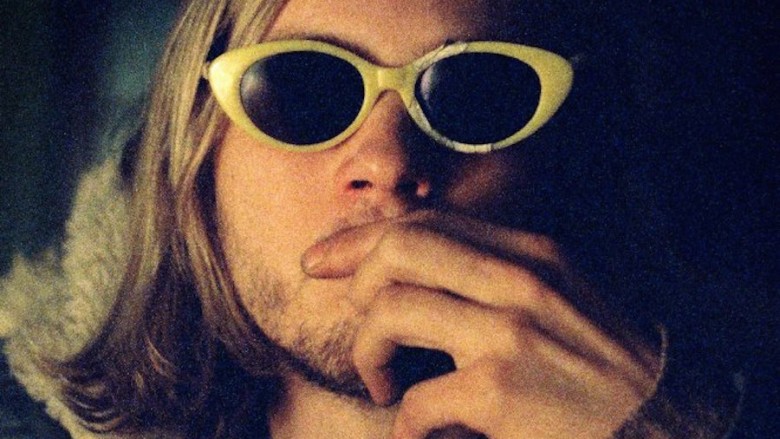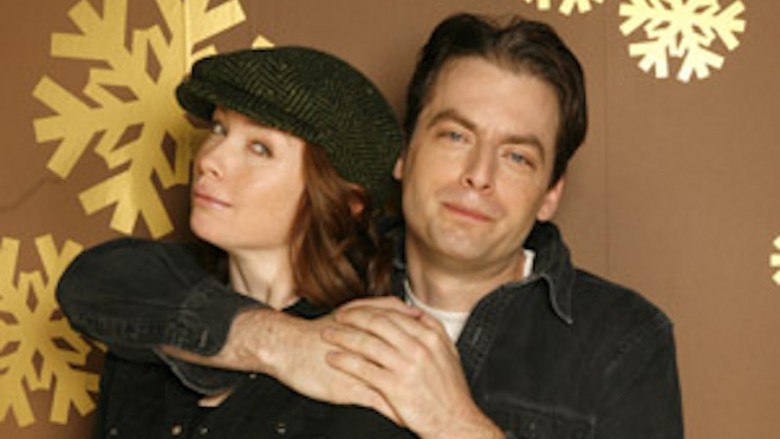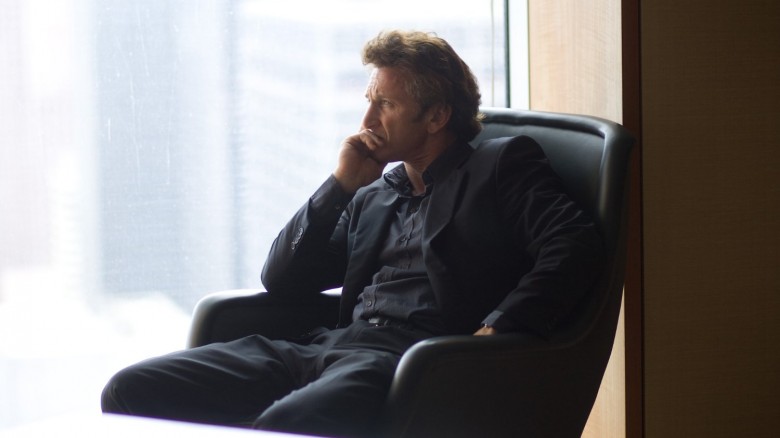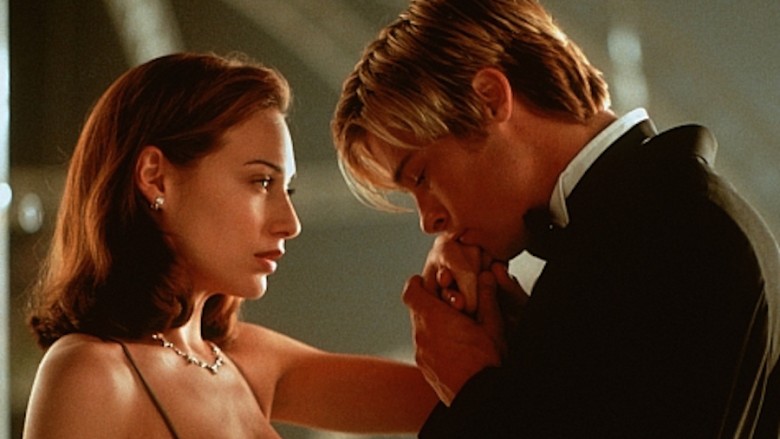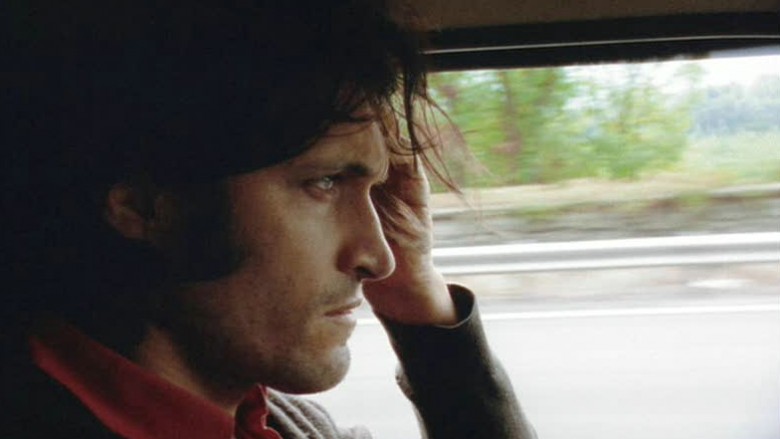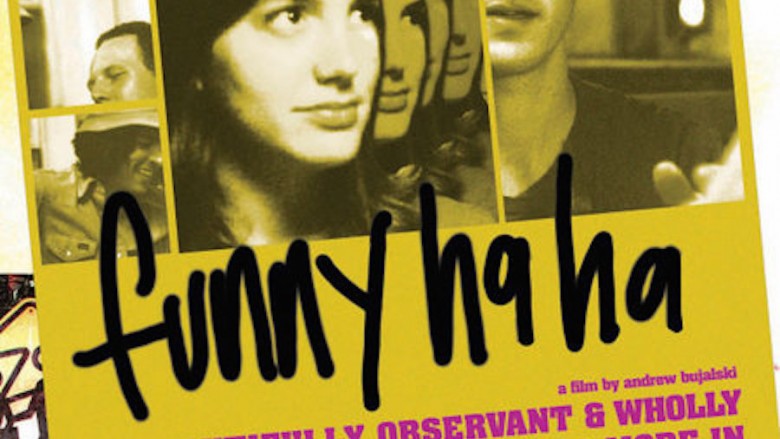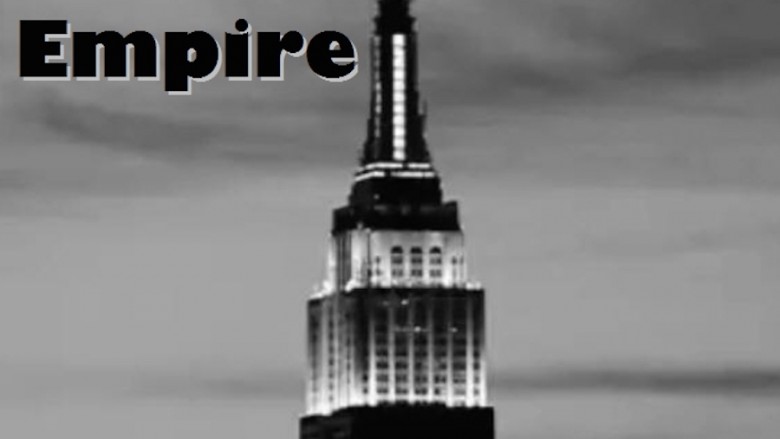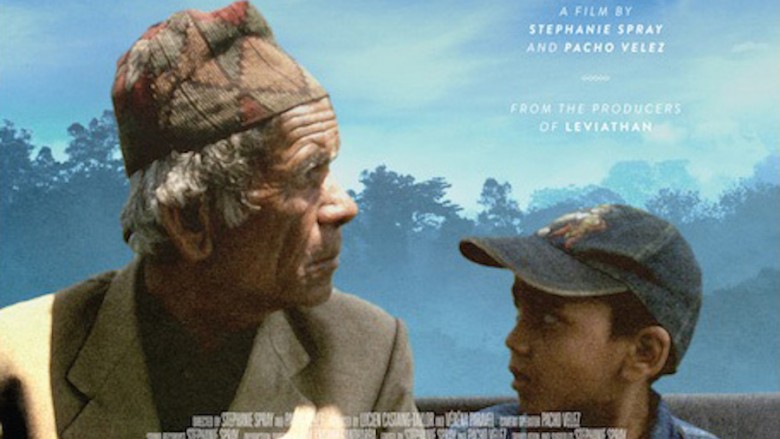Movies So Boring We Can't Watch Them
Movies should take all forms, from crazy bullet-filled action films to quiet British dramas. But sometimes, artsy movies take things too far. It's one thing to let a story be told with patience, but quite another when you can't possibly get through the flick without drooping eyelids. So, to save precious hours of your life, here's some movies that are literally too boring to watch.
Last Days (2005)
A film about the last days of Kurt Cobain's tragic life? Sounds like a winner! Too bad director Gus Van Sant decided to have Michael Pitt, playing the Nirvana singer, just wander around and mumble incoherently from time to time. Here's a thrilling moment from Last Days: The camera moves from a drugged-up Cobain to a TV screen on the other side of the living room. A Boyz II Men video is playing. The camera stays on Boyz II Men ... for the entirety of the video. The camera moves back to the strung out singer. And ... scene. That's the most action-packed scene in the film!
The rest of the movie is just stringy hair and thrift store clothes, until it all ends with the sound of a shotgun, at which point, the audience rejoiced that their long-suffering finally came to an end. At least hard-core Boyz II Men fanatics had something to cheer about.
Flannel Pajamas (2006)
With a name like Flannel Pajamas, you don't necessarily expect a thrill-a-minute ride. But you might expect a story, or characters that aren't obnoxiously dull. A part of the mumblecore genre, Flannel Pajamas explores the relationship between Stuart and Nicole, two whiny white people who are super-needy and grating at all times. Though it seems clear that the relationship is doomed since they hate almost everything about the other person's life, the film just keeps going.
Want to hear a woman in her 20's still call her mother "mommy?" Want to see a stripping scene that ends in pitiful tears? Of course not. And those moments honestly make the film sound more exciting than it is. Flannel Pajamas is like a very fine grain sandpaper rubbing away at your skin: it doesn't really hurt, but it feels pointless and just gets insanely aggravating over time.
The Clock (2010)
Now, you have to give The Clock a little credit. Christian Marclay is a video and sound artist — not a filmmaker, per se — and The Clock was shown as an installation piece at the Museum of Modern Art in New York. So, it's not meant to be held to the standards of a traditional Hollywood film. Still, it would be pretty hard to sit through one hour, let alone all 24 hours of The Clock.
Just slightly more interesting than literally watching a clock tick the seconds by, Marclay's piece uses clips from 10,000 films to account for every minute of the day. So, it's a more artsy way to watch the minutes of your life fading away. Though it's an amazingly monumental effort, whoever can sit through more than five minutes of this gets the Attention Span of the Year Award.
Tree of Life (2011)
Many critics loved Terrence Malick's three-hour journey through time and space, The Tree of Life. But don't be fooled — this movie is boring. Whether you're seeing Sean Penn play a character that's even moodier than real Sean Penn, Jessica Chastain smiling with wind-blown hair and almost no lines, or some dinosaurs, pretty much nothing in the movie really connects, and it all seems like an exercise in making the most pretentious film possible.
Oh, and you didn't misread that last paragraph. In the middle of nowhere, there's a sequence with CGI dinosaurs. It comes after long shots of pretty colors and birds flying in cool formations. It's certainly beautiful, but totally pointless, something dinosaurs should never, ever be.
There is some semblance of a story, at least. Brad Pitt plays a father who likes one son more than the other and pushes the other a little too hard. But he does hug both boys a lot and say that he loves them which, for the '50s when that segment is set, would easily make him the best dad in Texas. But the good son dies, and the other son grows up to be Sean Penn who's whiny and moany all the time. No wonder Pitt likes the other kid better. Then, the Laser Floyd show happens (minus Pink Floyd, sadly). Other things to continue to occur, but it's only exciting enough for you to will yourself to sleep in the hopes it'll make the movie progress at a swifter pace. Anyway, Sean Penn meets the Mom again in some desert fantasy heaven? Or he's dead? It doesn't matter. This is the kind of movie that people have to say they like so they don't feel stupid. But the reality is, it's a beautiful, albeit boring, mess.
Meet Joe Black (1998)
You wouldn't think a movie about death taking human form would be a snooze-a-palooza, but it is. Brad Pitt is back on the list in another real slog, but unlike Tree of Life, Meet Joe Black actually does have a story. Anthony Hopkins plays Bill Parish, a big business man about to celebrate his 65th birthday. His daughter, Claire Forlani, might marry a guy on the board of the company, but Hopkins gives a big speech about how she must wait for passionate love. Seconds later, Forlani sees Brad Pitt in a coffee shop and, though her heart's a flutter, she doesn't even get his name. Then, this happens:
So, Pitt's dead, and Death takes over his body. Now, looking like Pitt, Death tells Hopkins that his whole love speech made him want to experience an earthly life. As long as Hopkins agrees to guide him, Death will let him live. Okay, that's interesting. Then ... the movie goes on for another two hours and 55 minutes. Forlani and Pitt fall in love. The audience falls into a deep sleep. Based on the 1934 film Death Takes a Holiday, the remake manages to make the character of Death out-of-control boring. Most of the movie is spent with everyone giving meaningful stares and speaking in hushed tones. By the end of its three-hour (and one minute) running time, you're praying for your own death.
The Brown Bunny (2003)
The first cut of Vincent Gallo's Brown Bunny was considered dull, self indulgent, and pretentious. Gallo eventually cut the film's running time down for its indie release, but it didn't make much of a difference. Even with a scene of Chloe Sevigny (Gallo's girlfriend at the time) making Gallo very, very happy in the wink-nudge way on camera (allegedly, what she did was honest-to-goodness real, too), people were still bored to tears. But Roger Ebert had a special hate for the original Cannes version. As he tells it: "'The worst film in the history of the festival,' I told a TV crew posted outside the theater. I have not seen every film in the history of the festival, yet I feel my judgment will stand. Imagine 90 tedious minutes of a man driving across America in a van...Imagine a long shot on the Bonneville Salt Flats where he races his motorcycle until it disappears as a speck in the distance, followed by another shot in which a speck in the distance becomes his motorcycle. Imagine a film so unendurably boring that at one point, when he gets out of his van to change his shirt, there is applause." So, it got a thumbs down.
Gallo didn't take kindly to this and called Ebert "a fat pig with the physique of a slave trader." Ebert responded, with 100% Ebert sass, "It is true that I am fat, but one day I will be thin, and he will still be the director of The Brown Bunny." Gallo also said he hoped Ebert would get cancer and die, and warned that he put a similar hex on Gene Siskel before he passed from brain cancer. So, Gallo apparently cursed the two greatest film critics of all time and produced a movie that made oral sex boring. Great job.
Funny Ha Ha (2002)
It's known as the first mumblecore film, and that's the only thing memorable about the entirety of Funny Ha Ha. It's not funny. It doesn't prompt the reaction of "ha ha." It's not even funny in an odd way, or like a clown. It's just twenty-somethings talking about nothing, but not in a good way, like a prime episode of Seinfeld.
Basically, Funny Ha Ha wants to take away the artificial aspects of film, and present real life. So, they subtract story, interesting dialogue, intriguing characters, professional set design, and good lighting, so we get this "film student just bought his first camera and thinks his friends are so funny," style of movie making.
If you're a fan of mumblecore, then you have to respect Funny Ha Ha's pioneering spirit. They were brave enough to make a movie minus anything interesting happening, and plus a tremendously high usage of the word "like," and a new era of cinema began.
Dream of Light (1992)
When you want to say that something's really boring, you say "it's like watching paint dry." Well, that's exactly what this film is. Okay, it's slightly better than a close-up of the side of house on a sunny day while evaporation does its magic, but just slightly. Dream of Light, or Quince Tree of the Sun, watches a painter paint a painting. Sometimes he gets up to move things. Other times he paints. And, oh boy, does that paint dry! Wow! For two and a half hours, that's basically all you see. There are a few scenes of dialogue, at the absolute least, and the painting and tree are supposed to represent the painter's mortality. Spoiler alert: The fruit of the tree lies rotting on the ground, but look – new blooms adorn the branches, and the circle of life continues. Literally, looking out a window is a more fun way to spend two hours.
Empire (1964)
Andy Warhol could do more than make colorful screen prints of Marilyn Monroe — he was also a filmmaker. Though he made some interesting, albeit strange, experimental films in the '60s, Empire was his biggest endeavor. Well, it may not have been the biggest, but it was certainly the longest, clocking in at eight hours. What wacky post-modern hijinks did Warhol have in store? Just a still shot of the Empire State building. Silently. For eight hours. We didn't even get a giant monkey grasping a terrified girl to break up the monotony.
Some reviewers found the film revolutionary, declaring that the full eight hours of a building in grainy black-and-white was a work of avant-garde genius. But it wasn't just putting a camera on a tripod near the Empire State Building — Warhol did apply some technique to make the film. He actually only shot six-and-a-half hours, but then played the footage at three-quarters speed. Jonas Mekas, former Village Voice critic, told the New York Times that "[Warhol] wanted that touch of unreality, to take it out of naturalism." He's not wrong — it is insanely unnatural to sit and watch a building for eight hours, so Warhol certainly achieved his goal.
Manakamana (2013)
In Nepal, a Hindu temple sits high above the clouds called Manakamana. Travelers of all ages and races come to the site, from selfie-ready tourists to animal-sacrificing pilgrims. Little is known of the temple in the Western world, and now here's a documentary of this incredible place.
Except ... Manakamana doesn't show us the temple, explain its history, or talk up its religious importance. It doesn't go into the common goat sacrifices that take place there. Instead, it sits a camera in the cable car that takes you to the temple, and shows the people riding in the car. There's no edits — we always see the full ten-minute ride. There's no subtitles, and sometimes the rides are completely silent. One segment is just goats and their butts. Yep, ten minutes of prime goat booty viewing.
The reviews are ecstatic for the film, and critics love the story that's told through what it's not telling you. But unless you like long takes of people trying to not be bored as they head up a mountain, Manakamana may not be your cup of tea. But if you're heading to Nepal to sacrifice a goat, put on a little extra makeup, because they may wake up one and randomly decide to do a sequel.

